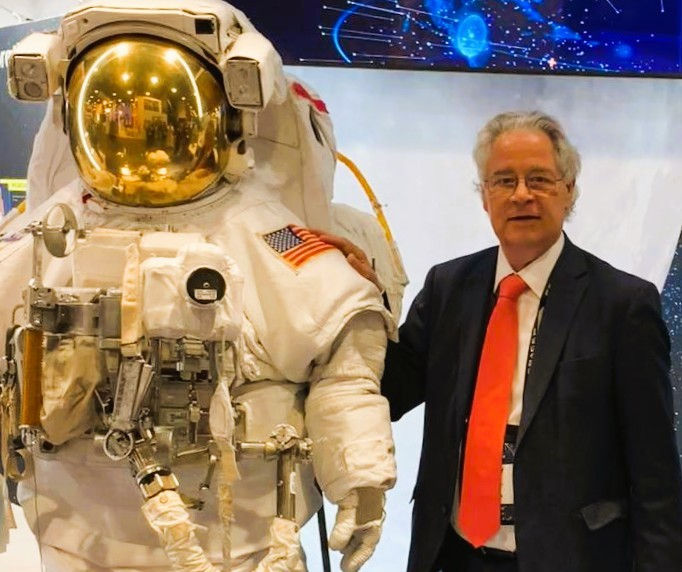Unlocking the Secrets of the Space Vault
- Jeremy Clift

- Jun 20
- 4 min read
Jeremy Clift, author of Born in Space

At a time when AI, genetic engineering, and ecological instability dominate headlines—and imaginations—science fiction has never felt more urgent. My Sci-Fi Galaxy series was born out of a desire to explore those frontiers through the most personal lens I could find: family. What happens when motherhood, technology, and survival collide in orbit and beyond?
When I wrote Born in Space, it was conceived as the beginning of a larger story, a series that would follow not just one mother’s fight for her children, but the children themselves as they grew into the roles the new world had thrust upon them.
Now, with Space Vault: The Seed Eclipse, that vision begins to unfold.
Set years after the initial events of Born in Space, the second book in the Sci-Fi Galaxy series picks up the threads — reuniting us with Teagan Ward and the seven genetically engineered children she once risked everything to protect. But this time, the spotlight shifts.
The Legacy of the Seven

If Born in Space was an allegory for the strength of a mother’s love and the unbreakable bonds of family—about claiming connection between mother and child, between identity and freedom of choice—then Space Vault is about what comes next. What happens when the children, created in a corporate experiment and born aboard a space station, are loosed into a fractured universe?
Each of the seven has gone on to forge their own path, but it’s Shiko—quiet, observant, shy, and fiercely principled—who becomes the emotional and moral compass of this next chapter. As the shadows of old powers return, he is drawn back into the Consortium’s orbit, uncovering truths that could alter everything humanity believes about evolution and ownership.
Diana: The Future They All Fear
At the heart of this book is Diana Ward—Teagan’s biological daughter, born on Earth, but as part of a secretive lunar experiment. Diana is unlike anyone else. Engineered to survive in deep space, she learns, adapts, and even heals faster than nature should allow. But what truly terrifies the Consortium that created her isn’t just her body—it’s that they could lose control of their most spectacular invention.
To them, Diana is an asset, a prototype for the future. But to Teagan and her partner Julian, the painter, she’s something far more complex. A child worth protecting. A symbol of everything worth saving.
A World on the Edge
As Earth struggles with ecological collapse and widespread food shortages, one structure holds the key to survival: the lunar Seed Vault. Hidden beneath the moon’s surface, it contains the last viable genetic codes for Earth’s crops and ecosystems.
Whoever controls it, controls the future.

But control is exactly what this story resists.
The Vault becomes the flashpoint for a larger conflict—between corporate power and planetary survival, between human and alien civilizations, between those who want to guide evolution and those who want to profit from it.
Shiko, Diana, Teagan and her father Noel find themselves caught in the middle, as old allies fracture, new enemies rise, and a dangerous artificial intelligence named Zaun begins manipulating events from behind the scenes.
Aliens, AIs, and Ethical Frontiers
The Sci-Fi Galaxy series is more than action and adventure (though you’ll find plenty of both). At its core, these books explore the ethical frontiers of technology: who gets to decide what life should look like in the future? Can we engineer survival without sacrificing our humanity?

In Space Vault, those questions are complicated by the presence of two alien civilizations—the insectile Tritans and the reptilian Draxid—each with their own philosophy about life, control, and legacy. The Tritans view Diana as a living link to a more harmonious future. The Draxid see her as a threat. And Zaun? It sees her as an opportunity.
Through these lenses, the novel examines everything from genetic ownership to AI sovereignty, corporate domination to familial loyalty.
Returning to the Heart of the Series
And yet, for all its cosmic scale and scientific speculation, Space Vault remains grounded in the same emotional foundation that started this series: Teagan Ward’s unyielding drive to protect her children—biological or not. Whether she’s facing down alien operatives, corporate enforcers, or her own past mistakes, her strength is what holds the center.
Shiko, once one of the “heavenly babies,” is no longer a child. Like the others, he is leaning to live outside the confines of his old habitat. Like his brother Ved, he is searching for his identity.
Shiko’s bond with one of the protesters against corporate genetic manipulation forms the emotional core of the story. Their journey is one of survival, but also of identity: who we are when others have written our genetic destiny, and what it means to claim a future that was never meant to be ours.
The Journey Continues
If you read Born in Space, you’ll recognize the stakes—and the scars. If you’re new to the series, Space Vault: The Seed Eclipse can serve as both a continuation and a new beginning.
Either way, I’m excited for you to join me as the story grows deeper, darker, and more urgent.
The Vault is open. And the future is still unwritten.
— Jeremy Clift, Author of Born in Space and Space Vault: The Seed Eclipse. Jeremy Clift profile.



Comments